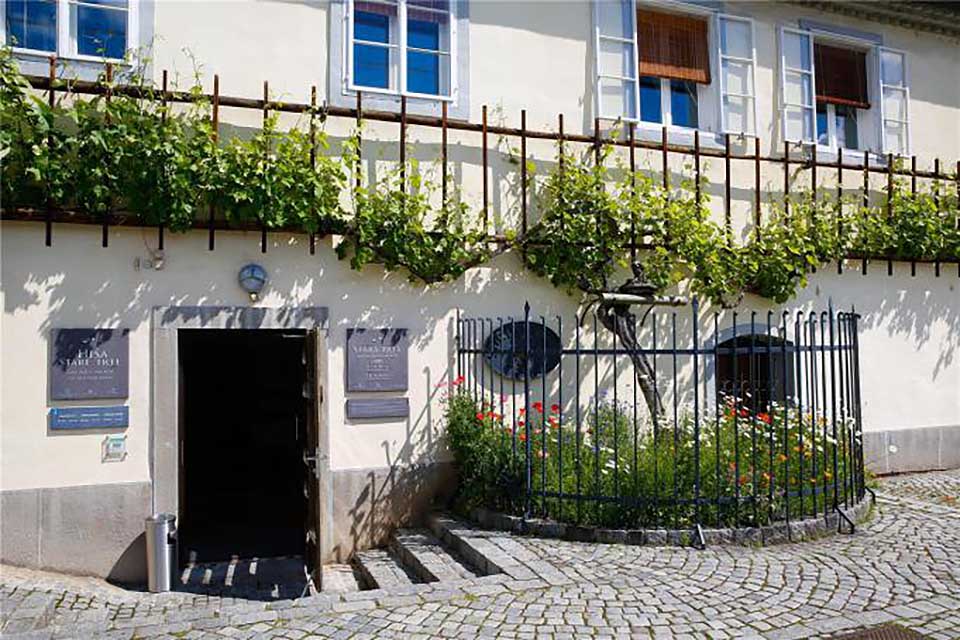
If you’ve browsed around recently in a wine shop or the wine section of a good supermarket, it’s likely that you might have come across the expression “Old vines” on one or two of the wine labels. Quite often it appears in the language of origin, for example you’ll see the expression vieilles vignes on French bottles. But what does it mean? The short answer is that it means exactly what it says: the grapes were grown on vines that are older than most. This of course, begs the question “How old is old?” There is no legal or generally agreed definition, so if we really want to find out, we need to dig a bit deeper.
Wine has been produced for thousands of years and was probably first made sometime around 6,000 BC in what is now Georgia in Eastern Europe. It’s thought that grapes were cultivated in Southern Italy from around 4000 BC. By the Middle Ages, wine was the common drink of all social classes in the southern parts of Europe, and indeed anywhere else where grapes were cultivated. It was much safer to drink wine rather than water.
The Benedictine monks became one of the largest producers of wine in France and Germany followed closely by the Cistercians. The Benedictines owned vineyards in Champagne too and you may recall that Dom Perignon himself was a Benedictine monk. In 1435 the wealthy Count John IV of Katzenelnbogen was the first person to plant Riesling in Germany. And incidentally, if you remember the popular music of the fifties, that name might sound familiar. The pop song Gilly Ossenfeffer Katzenellen Bogen by the Sea was an enormous hit in both the United States and United Kingdom, despite its astonishingly vacuous lyrics. The best-known version in Britain was recorded by Max Bygraves and spent eight weeks in the charts.
But back to our old vines. A typical vine can normally produce grapes for up to 120 years. However, as the vine ages, it shifts focus from producing multiple berries to making fewer berries of higher quality. This is because the vine’s roots continue to grow downwards into the soil and as they dig deeper, they are able to access richer nutrients, which affect the flavour profile and quality of the finished wine. This means that older vines often produce grapes that are more intense and concentrated flavor, often resulting in exceptional wines. In a place where wine production is well established, “old vines” could mean those that are thirty to forty years old. In newly-established wine regions, twenty years might be considered “old”.
The oldest known grape-producing vine is an enormous plant in Slovenia and it has been bearing fruit for 450 years. In the South Tyrol region of northeast Italy, there’s a vine aged over 350 years and the fruit of this ancient plant is blended with that of younger vines to produce about 500 bottles a year. The oldest vine with an authenticated age and thought to be the largest in the world, is known as The Great Vine at Hampton Court Palace in England. It was planted in 1768 and contrary to expectations, it produced its largest crop ever in autumn of 2001, nearly 850 (383 Kg) pounds of grapes. To put that figure into focus, a single vine averages about seven pounds of grapes per crop. And in case you’re wondering, one bottle of wine requires about two to three pounds of grapes.
Rare Vineyards Sauvignon Blanc IGP (white), Côtes de Gascogne, France (Bt. 650 @ Wine Connection)
You’ve heard about Sauvignon Blanc often enough. But the Côtes de Gascogne? Well, it’s a wine-growing district in the large French region of Gascony which lies on the Atlantic side of France and stretches from Bordeaux down to the Spanish frontier. Although most of its neighbours produce red wines, the Côtes de Gascogne produces mostly whites – around 91% to be exact. These are made from a variety of grapes, notably Colombard, Sauvignon Blanc, Sémillon and Muscadelle.
I was rather impressed when I first tasted this wine in 2014. The Sauvignon Blanc (SOH-vihn-yohn BLAHN) grape can sometimes produce wines of toe-curling acidity. However, this one has an extraordinary rich, fruity aroma of pear, peach and melon. There’s a delicate hint of boiled sweets and a touch of grassiness too. But to my mind, the aroma alone is worth the money. And incidentally, the wine is only fifty baht up from its 2014 price tag so it makes for excellent value. There’s also a faint mineral character in the aroma which is not altogether surprising, because this is fairly typical of a Sauvignon Blanc.
 At just 11.5% ABV, the taste is much fuller and richer than most Sauvignons, with loads of citrusy fruit on the palate and a lovely tang of acidity. As you might expect, it’s as dry as a bone but the taste fairly fills the mouth and there’s a clean and lemony dry finish. This wine has plenty of Sauvignon Blanc character but rather more intense than most of them. It would make a terrific apéritif, but I think it would also make a splendid partner for roast chicken or a rich and fully-flavoured cheese quiche.
At just 11.5% ABV, the taste is much fuller and richer than most Sauvignons, with loads of citrusy fruit on the palate and a lovely tang of acidity. As you might expect, it’s as dry as a bone but the taste fairly fills the mouth and there’s a clean and lemony dry finish. This wine has plenty of Sauvignon Blanc character but rather more intense than most of them. It would make a terrific apéritif, but I think it would also make a splendid partner for roast chicken or a rich and fully-flavoured cheese quiche.
 |
 |
 |





